Reviews
Alejandro Jodorowsky
Mexico, 1970
Credits
Review by Rumsey Taylor
Posted on 08 April 2013
Source Anchor Bay BRD
Categories Acid Westerns
The mole is an animal that digs tunnels under the ground, searching for the sun. Sometimes his journey brings him to the surface. When he sees the sun, he is blinded.
This epigraph is stated during El Topo’s title credits, and at first it may seem an obvious decryption of the film’s far-reaching symbology. The film involves a lone horseman, outfitted comprehensively in leather and with a voluminous outgrowth of hair, who rides in an empty desert with his naked son in tow. He seems to be the mole cited in the epigraph, and also that of the title (“el topo” translates into “the mole”), so one may reasonably assume that the film will depict his journey, and that his journey will end in tragedy.
My interpretation is contrived with foreknowledge of the film’s remainder, but the epigraph is nonetheless the clearest guide in parsing El Topo’s multitude of allusions and symbols. These are delivered which such incessancy that the film is more complimentarily described as a collection of surreal set-pieces than it is a picture beholden to any genre. This is clearly the film’s strength, but as El Topo progresses it betrays coherence with increasing disinterest, and this may make it a frustration to those compelled to piece together its burgeoning puzzle.
It opens simply enough, with the horseman and his son coming upon the slaughtered population of a small village and pledging revenge. But the relationship between him and the deceased is not clear, nor is his reasoning for abandoning his son, in the next scene, with a group of monks. As the horseman rides off, with a woman in lieu of his prepubescent young, the boy observes his father determinedly, as if vowing his own revenge.
The ensuing portion of the film finds the horseman in challenge against the so-called four masters of the desert. But rather than enemies of his own stature, only with a practiced reputation toward hostility, these masters are mystics. Prior to their confrontations, the mystics proselytize the horseman with a summary of their existential philosophy. Ever the more cunning, the horseman finds their religions transparent, and bests them all with sleight-of-hand.
Here is where a more traditional Western would end, with the hero having emerged victorious. This victory seems to support his self-absorption: in an earlier scene, the horseman referred to himself as God, and as he moves about the desert he does so with knowing poise. In this sense, he is the better of the desert’s masters by virtue of his narcissism. Having defeated his most proximate opponents, the man sees through the transient myth of whatever acclaim his victory accords, and ultimately reaps no prize from his endeavor. His female riding mate is unimpressed by his sudden humility and shoots him, rendering him comatose. Abandoned and left to perish in the desert sun, he is collected by a group of paraplegics and dwarves.
Chaptered “Psalms”, the second portion of the film depicts the gunslinger’s spiritual redemption. He awakens from the coma and eschews all aspects of his former self; he even shaves off his hair and beard and eyebrows. He observes the piteous circumstance of those who have taken him in, and finds himself in their cavernous dwelling—the only opening is many stories above them. The man, assuming the role of a Moses, resolves to liberate them from this cave. There’s the sense that, upon reaching this opening and finding daylight, the man’s fate will not be a fortunate one.
If El Topo is rich in its symbology then it is deprived of its fortune, a gallery of expensive products that are not available for purchase, and it fails to harness its symbols into a clear analogous narrative. Relentlessly confounding, it is both a highly imaginative experience and a nearly impenetrable one. Nevertheless, there is much pleasure to be received in an attempt to decipher it for the viewer unthreatened by its abstruseness.
El Topo premiered in New York at the beginning of the 1970s, and summoned a peculiar wave of cinephilia. It screened only at midnight, at a single theater in downtown New York, and was yet inordinately popular, playing for some six months straight to regular crowds. This same practice would apply to Pink Flamingos, Eraserhead, and The Rocky Horror Picture Show—films without any narrative correlation save for their aspects of camp, sexual transgressions, or surrealism.
The context of a midnight screening accords a certain aspect of cinematic malpractice, as though the qualities that engender the potential danger of the twilight hours somehow infest the material of film, making it dangerous or somehow scandalous. There’s the sense that, before a midnight movie begins, it will be so profoundly subversive that its contents will keep you jolted awake. El Topo is in this sense the most lurid of its midnight brethren for its depiction of violence (including castration, rape, mutilation, and immolation).
These films no longer belong to midnight, however, and this is especially unfortunate in the case of El Topo. The film is so removed from the context that ensured its considerable popularity that it’s become a relic from a dead civilization, one that relays little of its civilization’s practices and yet much of their cultural appetite. It is dated in a sense that proffers little compliment. But for all its haphazard, mystical posturing, El Topo is not a shallow film, and a rewarding one for those game to ascribe meaning to its myriad symbols.
More Acid Westerns
-
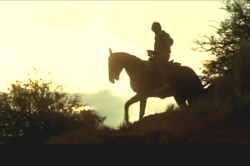
Ride in the Whirlwind
1965 -
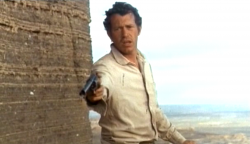
The Shooting
1966 -
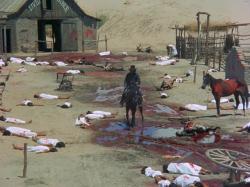
El Topo
1970 -
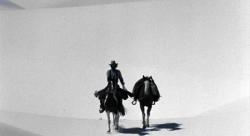
The Hired Hand
1971 -
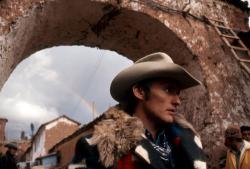
The Last Movie
1971 -
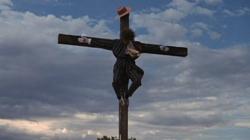
Greaser’s Palace
1972 -
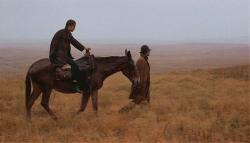
Bad Company
1972 -
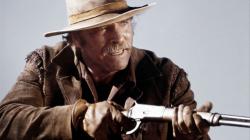
Ulzana’s Raid
1972 -
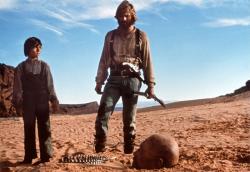
Jeremiah Johnson
1972 -
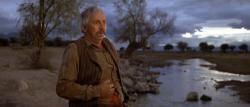
Pat Garrett & Billy the Kid
1973 -
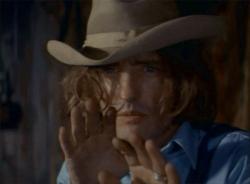
Kid Blue
1973 -
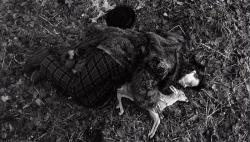
Dead Man
1995
We don’t do comments anymore, but you may contact us here or find us on Twitter or Facebook.



